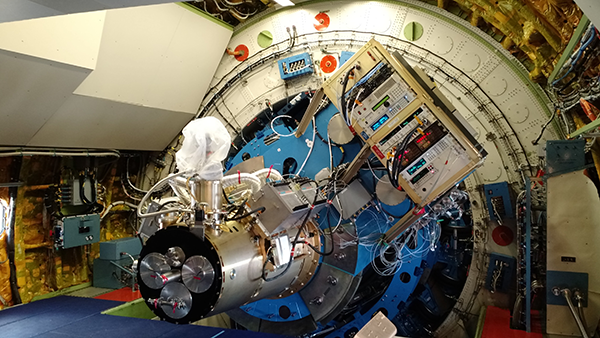
High-resolution Airborne Wideband Camera Plus (HAWC+)
Facility class Science Instrument
Principal Investigators:
Charles D. Dowell, NASA Jet Propulsion Laboratory, Pasadena, CA, USA. D. A. Harper, Yerkes Observatory, University of Chicago, Chicago, IL, USA
HAWC+ was a far-infrared camera and imaging polarimeter. It was designed to allow total and polarized flux imaging in five broad bands between wavelengths of 50 μm and 240 μm. Diffraction-limited imaging yielded spatial resolutions of ~5 – 20 arcseconds with fields of view ~2 – 10 arcminutes, respectively. HAWC+ utilized three 31x40 pixel arrays: two for the reflective component and one for the transmitted component of linear polarization. The detectors were cooled by an adiabatic demagnetization refrigerator to an operating temperature of about 0.1 – 0.2 K. Commissioning observations started in late 2016, the instrument acceptance review was completed in late 2017, and it was available for Cycle 7 observations beginning in 2018.
Primary Reference
"HAWC+, the Far-Infrared Camera and Polarimeter for SOFIA"
Harper et al., 2018, JAI, 7, 1840008-1025.
DOI:
10.1142/S2251171718400081
; ADS Bibliographic Code:
2018JAI.....740008H
Handbook for Archive Users
Tutorials
Data Recipe with 30 Doradus Publicly Available SDDT Data
Associated white paper:
SOFIA Community Science I—HAWC+ Polarimetry of 30 Doradus
Guides users through Python analysis techniques using the 30 Doradus dataset, teaching readers how to probe HAWC+ data cubes and learn basic analysis techniques—such as plotting Stokes parameters, error maps, and polarization vectors—to jump-start their own research.